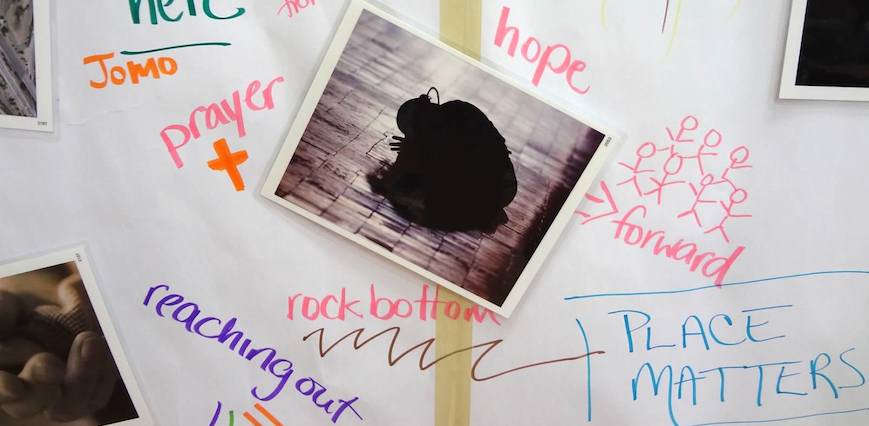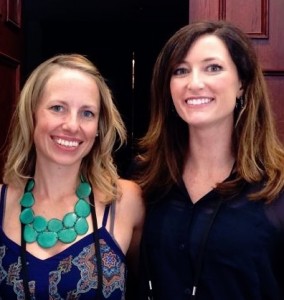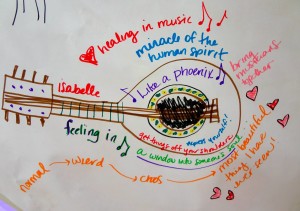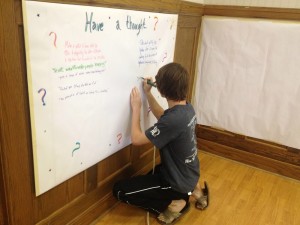
Two leaders from CSU’s Center for Disaster and Risk Analysis will deliver a presentation on “Youth, Gender and Disaster Recovery” on Feb. 16, outlining their research on how teens and young adults deal with natural disasters in Canada and the United States.

Lori Peek, associate professor of sociology and co-director of the center, and Jennifer Tobin-Gurley, a Ph.D. candidate in sociology and the center’s director of research and engagement, will speak from noon to 1:30 in the Lory Student Center, Room 312. Lunch will be provided by the Women and Gender Advocacy Center, and the event is free and open to the public.
Peek and Tobin-Gurley, both seasoned disaster researchers, have extensive experience with studying children and other vulnerable populations in disaster contexts. Peek is the co-author of Children of Katrina, with Alice Fothergill of the University of Vermont. The recently released book represents a rare, seven-year study of how young people fared after Hurricane Katrina as documented through stories and analyses of shifts in their health and well-being, family life, housing situations and school contexts. Tobin-Gurley and Peek both studied children and families who were displaced to Colorado after Katrina.
 In the talk on Tuesday, they will focus on the Youth Creating Disaster Recovery and Resilience (YCDR2) project, in which the research team worked with youth between the ages of 13 and 22 in Joplin, Missouri, and three other communities in Alberta, Canada, that experienced natural disasters in recent years: Slave Lake, Bowness and High River. In the project, they held workshops to engage teens and young adults in telling their own stories of disaster recovery through various creative means. They will share some of the results of those activities, including photo stories, stop-motion animation projects, drawings and songs. The two will also discuss the gender dynamics they observed in those communities.
In the talk on Tuesday, they will focus on the Youth Creating Disaster Recovery and Resilience (YCDR2) project, in which the research team worked with youth between the ages of 13 and 22 in Joplin, Missouri, and three other communities in Alberta, Canada, that experienced natural disasters in recent years: Slave Lake, Bowness and High River. In the project, they held workshops to engage teens and young adults in telling their own stories of disaster recovery through various creative means. They will share some of the results of those activities, including photo stories, stop-motion animation projects, drawings and songs. The two will also discuss the gender dynamics they observed in those communities.
 Tobin-Gurley described one activity, called Visual Explorer, which involved asking participants questions and then having them choose from a selection of stock photos to find an image that best captured their response. In another, they were provided an Apple iTouch and were asked to take pictures around their community or bring in their own photos from the disaster to create photo stories to share with the group. Participants also created art through superimposing images on their faces, presenting spoken-word poetry, and incorporating paper and clay figures in animated videos to present their ideas visually.
Tobin-Gurley described one activity, called Visual Explorer, which involved asking participants questions and then having them choose from a selection of stock photos to find an image that best captured their response. In another, they were provided an Apple iTouch and were asked to take pictures around their community or bring in their own photos from the disaster to create photo stories to share with the group. Participants also created art through superimposing images on their faces, presenting spoken-word poetry, and incorporating paper and clay figures in animated videos to present their ideas visually.
Peek noted how exciting it was to learn from youth using these creative methods, as it “opened up new spaces and means for them to share their own stories of disaster recovery.”
Robin Cox of Royal Roads University in Victoria, British Columbia, is principal investigator of the Youth Creating Disaster Recovery and Resilience project; Peek is co-principal investigator. For more information, visit ycdr.org.
The Center for Disaster and Risk Analysis and the Department of Sociology is in CSU’s College of Liberal Arts.